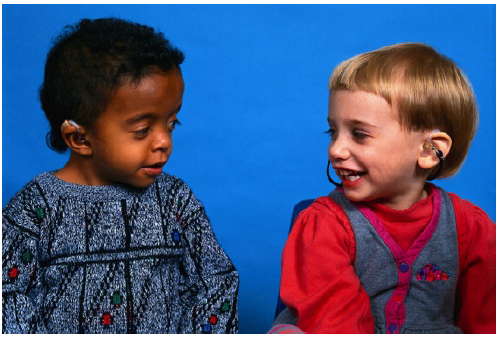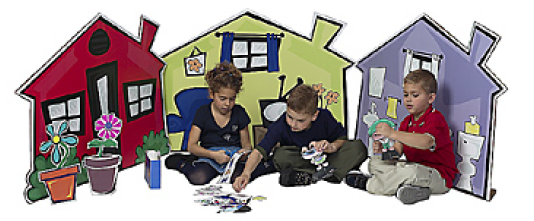What is Inclusion?
Inclusion is caring and educating children with disabilities in the least restrictive environment, which is usually the same natural environment (home or community setting) as children without disabilities participate (IDEA, 34 CFR §303.12(b)).
According to the Joint Position Statement by the Division of Early Childhood (DEC) and National Association for the Education of Young Children (NAEYC):
Early childhood inclusion embodies the values, policies, and practices that support the right of every infant and young child and his or her family, regardless of ability to participate in a broad range of activities and contexts as full members of families, communities, and society (DEC/NAEYC, 2009, p. 2).
Inclusion is not a specific place, teaching strategy or curriculum but a service educators provide to meet the individual needs of all children.
Inclusion is:
- Belonging
- Being valued
- Having choices
- Acceptance
- Providing necessary supports
- Helping all children and families participate successfully (Allen & Cowdery, 2005)

High Quality Inclusive Care
High quality inclusive care includes the following components:
Access – All children need to have “access to a wide range of learning opportunities, activities, settings and environments” (DEC/NAEYC, 2009). Teachers need to assist all children in acquiring skills as they are exposed to appropriate early learning experiences. Educators must adapt and modify the environment to eliminate any physical or other types of barriers.
Participation – Children need to be able to fully participate in play and learning activities. This can be accomplished by providing children with individualized supports and accommodations.
Supports – Educators need a support system which includes professional development on effective inclusive practices and access to resource services. A system of supports should be established (DEC/NAEYC, 2009).
Benefits of Inclusion
The main goals of any inclusive program must be to help all children develop a sense of belonging and membership; nurture positive social relationships and friendships; and give children opportunities to reach their full potential (DEC/NAEYC, 2009).
Inclusion provides all young children with opportunities to observe, interact and imitate children who have acquired higher level motor, social, language and/or cognitive skills. As children learn directly from other children, they are often motivated to push a little harder to keep up with their peers (Allen & Cowdery, 2005). Children with less severe disabilities have been shown to gain higher levels of socialemotional skills in inclusive settings (Holahen & Costenbader, 2000).
Inclusive programs allow children with and without disabilities to develop friendships, gain an acceptance or tolerance of differences, and view children achieving despite challenges (Allen & Cowdery, 2005; Holahan & Costenbader, 2000). Children with typical development in inclusive settings have opportunities for peer tutoring (i.e. one child instructing another) and can develop sensitivity or an increased awareness of their own strengths and weaknesses.

Inclusion in Early Childhood Programs
High quality early childhood inclusion programs play an important role in providing children with disabilities a place to grow, develop and reach their full potential. Inclusion is having a positive impact on children with and without disabilities. Children benefit developmentally and socially from participation, and children enrolled in inclusive preschools are more likely to be enrolled in inclusive elementary classrooms (Guralnick, 2001).
References
- Allen, K. E. & Cowdery, G. E. (2005). The exceptional child: Inclusion in early childhood education. Clifton Park, NY: Thomson Delmar Learning.
- DEC/NAEYC. (2009). Early childhood inclusion: A joint position statement of the Division for Early Childhood (DEC) and the National Association for the Education of Young Children (NAEYC). Chapel Hill, NC: The University of North Carolina, FPG Child Development Institute.
- Guralnick, M. J. (2001). Early childhood inclusion: Focus on change. Baltimore: Brookes.
- Holahan, A. & Costenbader, V. (2000). A comparison of developmental gains for preschool children with disabilities in inclusive and self-contained classrooms. Topics in Early Childhood Special Education, 20, 224-235.
- Individuals with Disabilities Education Improvement Act (IDEA), Amendments of 2004, Pub. L. No. 108-446, 20 U.S.C. §1400 et seq.
- Winter, S. (2007). Inclusive early childhood education: A collaborative approach. Upper Saddle River, NJ: Pearson Merrill Prentice Hall.
Byington, T.
2010,
Inclusion in Early Childhood Programs,
Extension | University of Nevada, Reno, FS-10-67


